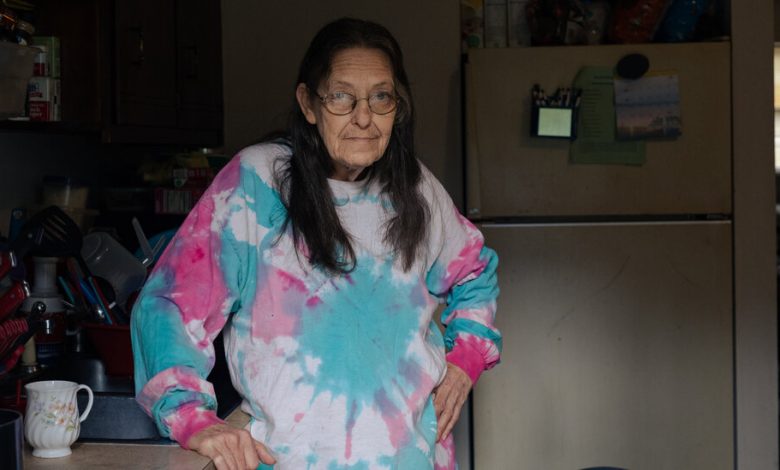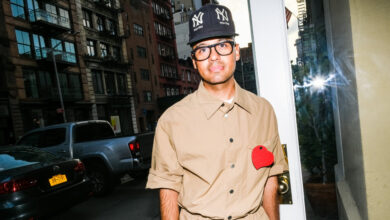‘Close to the Line’: Why More Seniors Are Living in Poverty

It has never been easy for Mary Cole to support herself and the 19-year-old grandson who lives with her in Bristol, Va., on her monthly $914 Supplemental Security Income check.
But it’s getting harder. “I’ve been struggling a lot,” Ms. Cole said.
Because benefits counselors at her local agency on aging have helped her apply for several kinds of public assistance, she pays only $158 in rent for her apartment in a subsidized Section 8 building.
A federal program helps Ms. Cole, 69, with heating costs. The state underwrites her Medicare premiums, and a Medicare savings program allows her to fill prescriptions for heart disease, hypertension, pulmonary disease and diabetes.
But benefits that increased in the early years of the coronavirus pandemic have been rolled back since the federal government ended the public health emergency this year. Ms. Cole’s heating assistance dropped from $900 in 2021 to $600 last year.
Her benefits through SNAP — the Supplemental Nutrition Assistance Program, or food stamps — had risen to $351 a month; they have since dropped to $140 a month. “That’s not going to feed us both,” she said. She has long since spent the federal stimulus checks mailed out in 2020 and 2021.
By the last week of the month, she often runs out of money and considers visiting a nearby food pantry. “I don’t like to do that,” Ms. Cole said. “I figure I’m taking something away from other people.”
Poverty among older Americans jumped sharply in 2022, the Census Bureau recently announced. Using the supplemental poverty measure, which economists have found is a more accurate reflection of income and spending than the official poverty rate, the proportion of people over age 65 living in poverty climbed from a modern low of 9.5 percent in 2020 to 10.7 percent in 2021.
Last year, the figure reached 14.1 percent, representing more than eight million older Americans.
“It’s quite alarming,” said Ramsey Alwin, president and chief executive of the National Council on Aging. “It’s really unacceptable.” Poverty among children also rose steeply, and median household income declined.
In southwestern Virginia, where the District Three Governmental Cooperative provides senior services and has helped more than 3,000 low-income residents like Ms. Cole apply for benefits this fiscal year, 20 percent of older residents live in poverty.
“We see it going up,” said Debbie Spencer, director of aging and disability services at the cooperative. She described clients “trying to decide if they’re going to eat or buy fuel or buy their medicines.”
How poor is poor? The supplemental measure defined poverty last year as an annual income below $15,998 for single adult renters ($22,624 for a two-adult household), with regional variations; the threshold was somewhat lower for homeowners, regardless of whether they had mortgages.
Black, Hispanic and Indigenous older Americans have higher poverty rates; so do women and those who aren’t married.
The Elder Index, devised by gerontologists at the University of Massachusetts Boston, also calculates how much money older adults need to meet their basic needs. In metropolitan Chicago, for example, a single renter over age 65 in good health required $2,481 per month last year for housing, health care, food, transportation and other expenses, according to the calculator.
The same renter in Bristol, Va. — Ms. Cole’s hometown — needed $1,794. Nationally, the average Social Security retirement benefit last year came to $1,792 monthly.
“Poverty rates fell in the early years of the pandemic because of the stimulus payments many older adults received,” along with raises in other benefits, said Richard Johnson, an economist at the Urban Institute.
As those payments and benefit increases ended, inflation took off, eroding buying power before it began declining.
“Social Security has cost-of-living increases, but they come with a lag,” Dr. Johnson said. Monthly inflation peaked in June 2022, but the cost-of-living adjustment for Social Security benefits, a hefty 8.7 percent increase, didn’t factor into beneficiaries’ checks until January.
“A lot of seniors live close to the line, so it doesn’t take much to tip them over” into poverty, said Teresa Ghilarducci, an economist at the New School for Social Research. Her studies also show the pandemic’s effect on older workers’ employment; so many retired early or were pushed out that about a million fewer older adults are now in the work force.
Even if senior poverty rates were to stabilize or decline next year, eased by the higher benefits some states provide, the figures generally remain stubbornly high compared to those in other industrialized nations with stronger public safety nets.
The proportion of older Americans living below the official poverty level fell drastically through the 1960s and 1970s, largely because of expansions and increases in Social Security. But there has since been a plateau.
“It’s not fully appreciated how persistent senior poverty has been,” Dr. Johnson said. “The decline really slowed in the 1990s and hasn’t improved significantly since.”
Economists and advocates have suggested solutions: raising the minimum Social Security benefit; increasing Social Security payments after people reach age 85, when health care costs typically increase; and improving S.S.I. benefits for older adults and people with disabilities who lack the work history to qualify for Social Security. Those steps would require congressional action.
For now, though, enrolling more older people in existing programs could have real impact. Federal benefits go a long way toward reducing poverty. Social Security alone lifted 20 million people over age 65 above the poverty level last year, according to census data. SNAP, housing subsidies and S.S.I. prevented another 1.6 million seniors from sinking into poverty.
But only about half of the older people eligible for food stamps have enrolled, meaning five million are missing out, Ms. Alwin said. Considering all public programs, “about $30 billion is left on the table every year that could help with food and medicine and other basic needs,” she said. “It’s eye-popping.”
Though most older people recognize that they qualify for Social Security, they’re often less aware of energy and housing assistance, Medicaid and Medicare programs for low-income beneficiaries, state property tax rebates or food stamps. “They may think they’re not for them but for someone else who’s more in need,” Ms. Alwin said.
Moreover, applying for these programs can be complicated and time-consuming; some require digital access and skills. Some applicants just give up.
“We err on the side of making sure that not one person gets benefits they’re not entitled to, and we sacrifice a lot of people who are eligible,” Dr. Ghilarducci said.
The National Council on Aging’s online Benefits Checkup tool shows which public and private programs seniors qualify for; the council also operates a toll-free help line (1-800-794-6559) staffed by benefits experts. With federal and foundation funding, it supports 84 benefit enrollment centers through local aging and family service agencies, senior centers and United Way programs.
Though such benefits counselors helped Ms. Cole receive assistance with housing, heating and food, she still doesn’t feel secure, and she relies on another source of support.
“God will take care of me,” she said. “I have faith that he will take care of my needs.”





